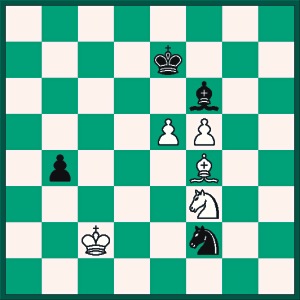|
Time
Out
The great Armenian Chess
Kajalie
Shehreen Islam
Some players
have the almost inexplicable ability to win a game without
doing anything whatsoever. They spot 'negligible' positional
inaccuracies and outplay the opponent, usually in a long game.
Little fireworks, and no crowd-pleasing business!
These
players know very well that an attacker will cross the limits
of safety or lose patience in the face of a dour defence.
From the point of view of chess, their play is based on the
notion that an over-extended, broad structure has its weaknesses
too. It may not be easy to maintain coordination among your
pieces, particularly when they have advanced deep into the
enemy territory but are not very effectively placed. This
may be called pseudo-development or deployment.
Modern
chess theory treats the concept of development a bit differently.
It's not enough to develop your pieces; the most important
thing is whether they are working in perfect harmony with
each other and creating lethal threats. Else, they will have
to retreat at some stage, losing valuable time.
One modern
player whose play had a truly mystic quality was Tigran Petrosian
(world champion 1963-69). Petrosian had a style not easy to
describe. He would follow the opening theory, like most others,
but in the early middle game, he would invariably start a
regrouping which often appeared to be rather enigmatic. A
chess commentator once said, "Petrosian can be dangerous
from the back rank". That defined the Armenian world
champion's original style and ideas in one sentence.
As a
player, he was often misunderstood for two reasons. First,
his subtle play did not have much appeal to the average chess
fan. Even a master of Rueben Fine's stature described Petrosian
as the weakest ever (!) world champion. Second, Petrosian
came under the shadow of Bobby Fischer who was playing marvellous
chess in the sixties. I think Fine did gross injustice to
the player who added an altogether new dimension to the game.
There is no doubt that Petrosian's play enriched chess in
many ways.
Here
is a game that he won against Ludek Pachman, the German player
and theoretician.
White-
Tigran Petrosian
Black-Ludek Pachman [A07]
Varna Ol (Men), 1962
1.Nf3
d5 2.g3 g6 3.Bg2 Bg7 4.d3 e5 5.00 Ne7 6.c3 00 7.Nbd2 c5 8.e4
d4 9.cxd4 cxd4 10.Nc4 Nbc6 11.a4 Be6 12.b3 f6 13.Bd2 Nc8 14.h4
h5 15.Kh2 Nd6 16.Bh3 Bg4 17.Kg2 Qd7 18.Bxg4 hxg4 19.Nh2 f5
20.Nxd6 Qxd6 21.b4 Nd8 22.b5 Rc8 23.a5 Rf7 24.Qa4 Rfc7 25.h5
Qe6 26.hxg6 fxe4 27.dxe4 Qxg6 28.Rfe1 Rc2 29.Ra2 Rxa2 30.Qxa2+
Qe6 31.Qxe6+ Nxe6 32.Nxg4 Rc5 33.Rb1 b6 34.axb6 axb6 35.Kf1
Nc7 36.Ke2 Rxb5 37.Rxb5 Nxb5 38.Kd3 Kf7 39.Kc4 Na3+ 40.Kb3
Nb5 41.Kc4 Na3+ 42.Kd3 b5 43.f4 exf4 44.gxf4 Nc4 45.Bc1 Ke6
46.Nh2 Kd6 47.Nf3 Kc5 48.Ng5 Kd6 49.f5 Ne5+ 50.Kxd4 Ng4+ 51.Kd3
b4 52.Kc2 Bf6 53.Nf3 Nf2 54.Bf4+ Ke7 55.e5 b3+ 56.Kxb3 Nd3
57.Bg3 Bg7 58.Bh4+ Kd7 59.f6 Bf8 60.Kc4 Nf4 61.Bg5 Ne6 62.Kd5
Ba3 63.Be3 1-0.

Position
after 55.e5
-PATZER
Copyright
(R) thedailystar.net 2004
| 